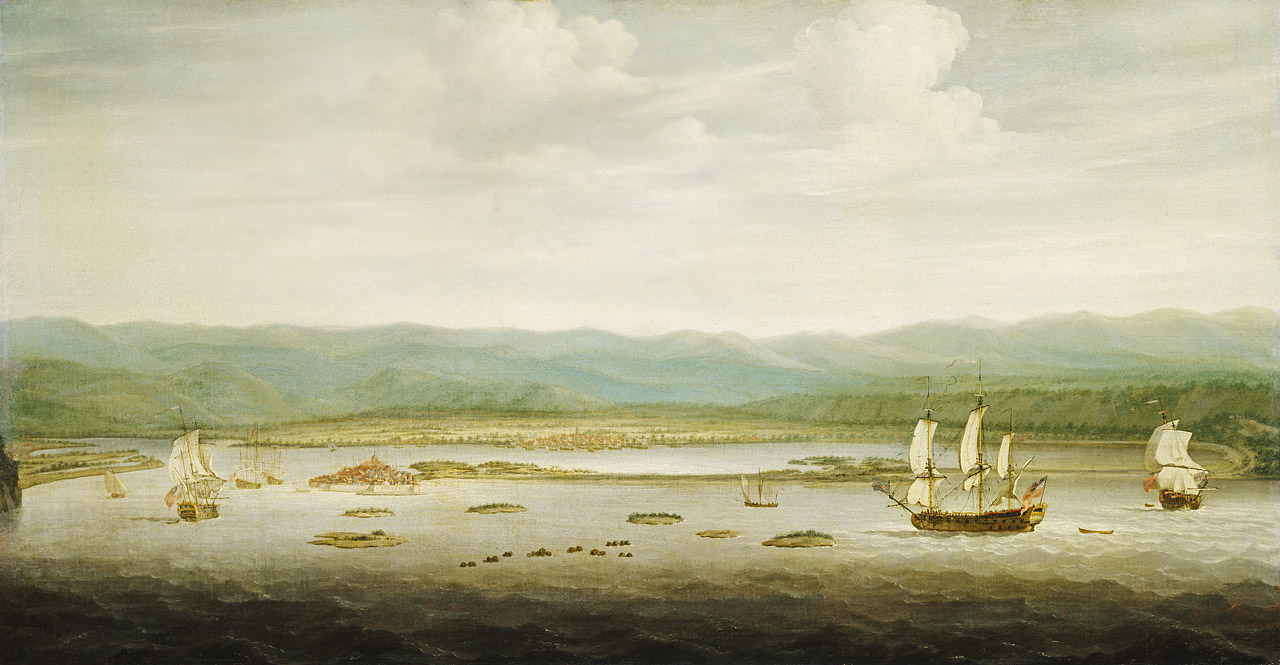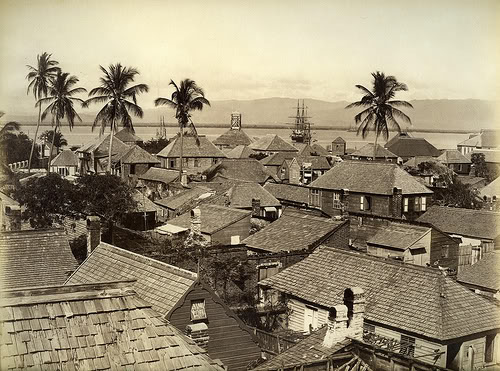Previous posts in this space mentioned the many vicissitudes the once richest and “wickedest city in the world,” Port Royal, faced over the centuries. Those who know anything about Port Royal are aware it was once the capital of Jamaica, the stomping ground for pirates and the playground of Henry Morgan, perhaps the most famous of the many pirates to have set foot in Jamaica.
It is also well known that Port Royal was devastated by a massive earthquake in 1692. The assumption of many, including me, is that Port Royal fell into general disuse after that earthquake. But while it became a shadow of its former self, Port Royal continued to play an important role, especially as a port of entry and as a marina for ships and boats, and as a naval base for soldiers.

But, for whatever reason, Port Royal faced disaster after disaster, as if the city was cursed. Even though some of what is written here was mentioned in previous blog posts, I thought it would be interesting to include it all in one article, to set a clearer picture of the trials and tribulations faced by the city.
Hurricanes and storms attacked the city again and again, causing substantial damage in 1680, 1683 and 1686, doing enough to cause jitters before the 1692 earthquake. Other hurricanes devastated the place in 1722 and 1744, setting back the earthquake recovery further. Others followed in 1880 and 1903, which dealt severe blows. A total of at least eight severe hurricanes. There were others that passed off the coast that affected the city without making a direct hit.
There were a number of devastating fires, such as in 1703, which, according to the records, destroyed the town, causing the most serious setback to the earthquake recovery that occurred just a little over a decade earlier. Yet another large fire sparked on July 13, 1816, destroying nearly the entire place. “Since the occurrence of this fire the town has ceased to be a commercial center and Port Royal is now of importance only as a naval and military station,” the 1895 edition of the Handbook of Jamaica indicated.
Port Royal was a beachhead for diseases and infections, partly due to its status as a port of entry. This at a time when infectious diseases had few known cures and no vaccinations and traveled from place to place via modes of transportation, such as shipping vessels. Cholera decimated the population in the period 1850-1852 (the records differ on the dates the outbreak actually occurred, though the consensus suggests 1851). Several outbreaks of yellow fever emerged in the early 20th century from about 1902 to at least 1905, including among soldiers that were quartered there.

Despite all that, Port Royal continues to exist, a monument to resilience. It is a pity, however, that the town, a mere runt of what it was, continues to languish. Cursed or not, Port Royal has much value that goes beyond the many historical artifacts and structures of the place. Having been to Williamsburg in Virginia, the first capital of the United States, I realized the possibilities of a place like Port Royal that our planners, leaders and investors continue to miss. At Williamsburg, they do constant reenactments of what life was like back in early colonial times. This is a major draw for tourists. People dress the part. They put on shows. There are displays. Souvenir shops sell items that supposedly represent what things were like back in the 17th century. It is all a piece to present a part of American history as it purportedly was back then.
Why not Port Royal? Robert Stephens, for years, beat his head against the wall to get both government and investors interested in the potential of Port Royal, without much success. Am I a dreamer to think that tourists, for instance, would pay good money to dress up as pirates on a ship that traverses the bay at Kingston Harbor? Knowing Americans as I think I do, they would absolutely go for it, in good numbers and for a good price.
At a time when Jamaica needs to diversify its tourism product, the bread and butter of the country, surely some enterprising person or persons can see the possibilities and take action, ensuring that the current residents benefit from the developments and are not left out, or worse, get displaced, because of it. The entire town could be a tourism mecca unlike anything else in the Caribbean.
Serious ting, we miss so much in terms of how to ‘sell’ Jamaica and our brand…well said and researched.